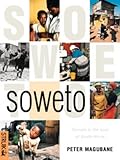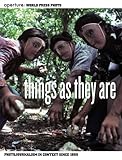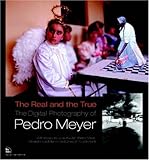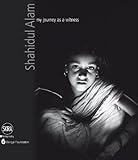Subscribe to ShahidulNews
Shahidul Alam on World Photography
 Image by?Nicol?s Garc?a on Wikimedia
Image by?Nicol?s Garc?a on Wikimedia
The Bangladeshi photojournalist tells us about the power of images and offers some striking examples of the photographer as artist, witness or activist
They complement each other very well. We storytellers use whatever works. Where a picture makes a difference is that it?s much more difficult to block out a photograph, because of its immediacy. You can choose whether you read a body of text or not, or on which of many layers you interact with it, such as just the headline. You may decide how you interpret a photograph, but very rarely is there the option to not absorb it. Something as powerful as photography can be used and abused ? it can push people into war, it can be used as propaganda, and it can create racism.
My book documents the journey of an activist as a photographer. I suppose it?s also a history book ? the photography movement in Bangladesh was immersed in its political struggles. I was on the streets during the protests against?General Ershad?s regime. There was repression and people were killed. When Ershad announced he was stepping down on 5 December 1990, it was a major public victory, because the people had brought down a very powerful general. It was a phenomenal thing to be part of and observe. The experience led to my career in photojournalism.
As a photographer I?m a very late starter. I come from a middle-class home, and most middle-class men in Bangladesh are expected to take on respectable professions. Photography doesn?t fall into that category. I?ve always been a very political animal. I wanted to play a role in working towards social equality, in my country and globally. The media seemed the most sensible place to do that.
Photojournalists in Bangladesh continue to face repression. Your own exhibition,?Crossfire, on extrajudicial killings was banned by the government on the basis that it would create ?anarchy?, and you received death threats. The closure was criticised by Amnesty International and later retracted. Do you believe photojournalists enjoy greater freedoms today than in the past?
I think the level of repression has increased in Bangladesh. It?s ironic, in the sense that we now live in a democracy ? to the extent that there are regular elections.
Your book also contains images of the English aristocracy ? why were they of interest to you as a photographer?
I shot those photographs for an Arts Council project. I felt it was important to take pictures of the English aristocracy. By and large, what I?d read about photography was about European conquests ? how anthropologists, writers and sociologists came to the colonies to index and categorise us, by documenting the width of our cranium, the length of our penis, and all other attributes. ?This is what you are,? we were told. So I thought perhaps I should turn this thing around. The project?s theme was ?work?, and I wanted to photograph people of leisure. Work is seen in terms of activity, but not in terms of the power structures that determine it. I thought it would be interesting to look at the people who decide what work is and how it is regulated, but rarely have to do manual work themselves. It wasn?t an easy project ? the better-off have doors to close on your face. It was difficult to explain what I wanted to do and still be allowed to take the pictures.

Soweto
By Peter Magubane
Your second recommendation is?Soweto by Peter Magubane, who was the first black South African to win a photography award in the country. What makes this book special?
A lot of work about conflict has been undertaken by well-known war photographers. But?Soweto is the work of a black photographer living in the townships reserved for non-whites during apartheid. This book documents his struggle. He had close links with Nelson Mandela and was very involved in the struggle against apartheid. And as he was witnessing it he was also persecuted, and spent a lot of time in jail. Photography was much more dangerous as a black person.
Over a sustained period of time, and with a great deal of honesty and nearness, Magubane produced stunning images ? not just in terms of their action and strength, but also because he showed what was really happening in Soweto by capturing the relationship between blacks and whites. Take, for example, his photograph of a group of naked black men with their hands held up above their heads. Inspections such as these were standard procedure before allowing black workers to enter a mine. The humiliation and degradation of the search was, I suspect, part of the process to dehumanise them. Magubane?s work stands out as being the voice of the people.

Next up is?Things As They Are: Photojournalism In Context Since 1955.
This is a more contemporary choice. It was published in 2005 for the 50th anniversary of World Press Photo. By collating seminal bodies of work,?Things As They Are looks at various developments in photojournalism and how the photo essay has evolved over time.
Do you believe?Things As They Are and World Press Photo is truly representative of world photography?
It is broader than it ever was, without a doubt. I think the book is a very well-researched, solid body of work, but it?s deficient in the sense that it ignores significant practices outside the West. There is a fleeting apology in the beginning about largely focusing on European and North American photography. But it does what it sets out to do very well. It is an entertaining ? if that?s the right word ? insight into our practice. The text is insightful, and there are wonderful examples of how the medium has been shaped by its practitioners and took different turns along the way. It describes how major wars have shaped photography ? such as the Vietnam War, when the US learnt never to trust photographers.
You?ve been involved with the World Press Photo competition yourself, and hosted it on short notice in 1993.
Yes, I?ve been on the jury four times and chaired it once. My association with World Press Photo started with a tiff. I had written a stinker of a letter to them, saying ?you call yourself ?World? Press??, though I did also say I thought it was an important exhibition and contest, and that I would be happy to host it if it came to Bangladesh. I received a letter from the managing director that predated mine, inviting me to be on the jury. Then I was told there had been a cancellation, and as I?d expressed interest I was offered the chance to host it. I didn?t want to lose that opportunity, but the exhibition can only be shown in its entirety, without any censorship, and there was no way I could guarantee that in Bangladesh. So I needed a place of my own to show the exhibition. I called my architect and asked if he could build me a gallery in 17 days. He thought I was completely crazy, but he knows me well enough. The gallery was finished in time ? though the walls were still wet when the reporters arrived.

Heresies
In?Things As They Are there is very little reference to non-Western photography, but some Japanese and Mexican photographers are mentioned, and Pedro is one of them. Pedro is close to 80, but his youthfulness and vigour is incredible. He began his career in analogue and practiced classical documentary photography, but started working with digital technology at a time when people of our generation were too scared. Within his lifetime he has reinvented himself. He is constantly probing and doesn?t allow conventions to tie him down.
Heresies is a very interesting book that makes you think hard about your own practice. One of the things he did was to completely demystify the identity crisis some photographers faced after the introduction of Photoshop. It?s a complex situation ? we question whether it is fair to use Photoshop, whether photojournalism is still authentic and truthful. Pedro cuts clean through the fluff, and looks at the practice of the media and what it represents. He writes about the authenticity and credibility of the source as the determining factor. He argues that the mode of construction is not an issue, it?s how it is used. It was an important statement that needed to be made.

Gitanjali
I came across Eric in 1986, when I was relatively new to photography. I?d read many books about photography, though almost all of them were based on Western practices ? it seemed nothing else existed. Then I met Eric, a Malaysian who was influenced by Bengali literature to the extent that he produced this very lyrical volume.
It?s not a literal rendering of any sort, more the depiction of a mood. He photographed water and nature in a very gentle, delicate way. It?s a very tender, touching piece of work ? in many ways reflecting the nuances Tagore brought to his literature. Both artists capture the same emotions, one through words and the other with images. Both?Gitanjalis could be read side-by-side, with Tagore?s lyrics accompanying Eric?s photography. I also found it interesting that although Eric doesn?t speak Bangla, he was able to absorb enough from the translations to create a poetic rendering of a literary work from a culture he didn?t know. It made me think about how diverse the practice of photography can be.

